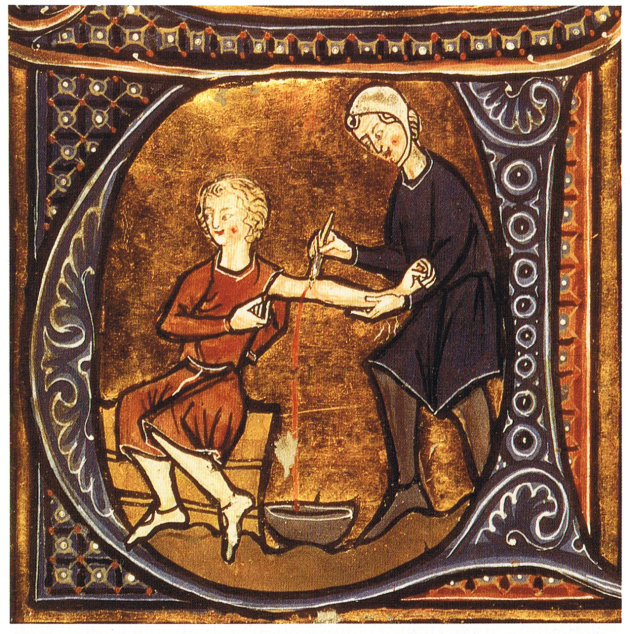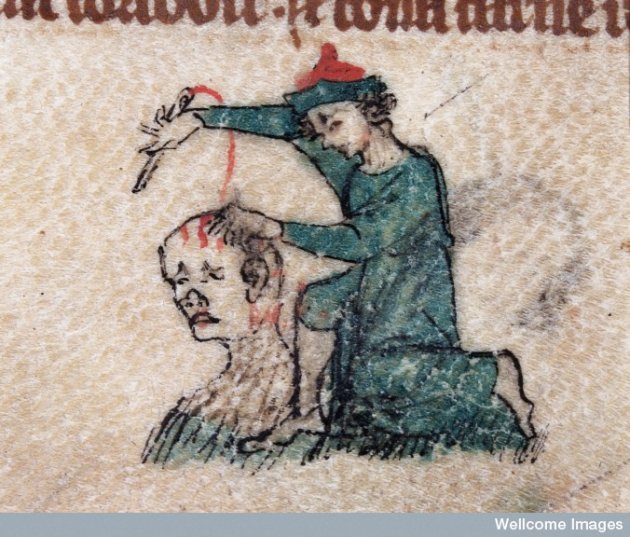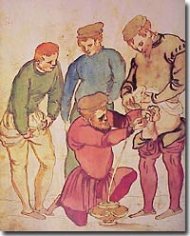Terrifying medieval medical procedures that will make your toes curl

With no general anaesthetic nor an understanding that dirt carries disease, medical procedures and operations in medieval times would have been an excruciating and often unsuccessful experience. Here are some of the most toe-curlingly painful-sounding operations that were carried out by 'doctors' at the time.
Hot iron to treat haemorrhoids
"And burn so as to leave none of the haemorrhoids unburnt, for you should burn them all up. You will recognise the haemorrhoids without difficulty, for they project on the inside of the gut like dark-colored grapes, and when the anus is forced out they spurt blood." Alternatively, sufferers could prey to St Fiacre, the patron saint of the condition. By the 12th century, Jewish doctor Moses Maimonides prescribed a much less painful method – a soak in the bath.
Trepanning

Drilling holes in people's skulls has been traced back thousands of years – evidence has been found going back to 6,500BC – and it was still a common procedure in the medieval period. While surgeons had the right idea about it relieving pressure on the brain (it was used to cure epilepsy, migraines and mental disorders), it was also thought the operation would expel demons from the heads of the possessed.
Evidence of the procedure being carried out in Yorkshire was discovered in 2004, with the recipient believed to have been involved in a fight. Simon Mays, a skeletal biologist at English Heritage's Centre for Archaeology, said: "It seems most probable that the operation was performed by an itinerant healer of unusual skill, whose medical acumen was handed down through oral tradition. The peasant was probably involved in the medieval equivalent of a pub fight, or could have been the victim of a robbery or a family feud."
Eye-cataract surgery
Bloodletting
Caesarean section
Metal catheters to treat blocked bladders

"If there is a stone in the bladder make sure of it as follows: have a strong person sit on a bench, his feet on a stool; the patient sits on his lap, legs bound to his neck with a bandage, or steadied on the shoulders of the assistants. The physician stands before the patient and inserts two fingers of his right hand into the anus, pressing with his left fist over the patient's pubes. With his fingers engaging the bladder from above, let him work over all of it. If he finds a hard, firm pellet it is a stone in the bladder... If you want to extract the stone, precede it with light diet and fasting for two days beforehand.
On the third day... locate the stone, bring it to the neck of the bladder; there, at the entrance, with two fingers above the anus, incise lengthwise with an instrument and extract the stone."

Comments
Post a Comment